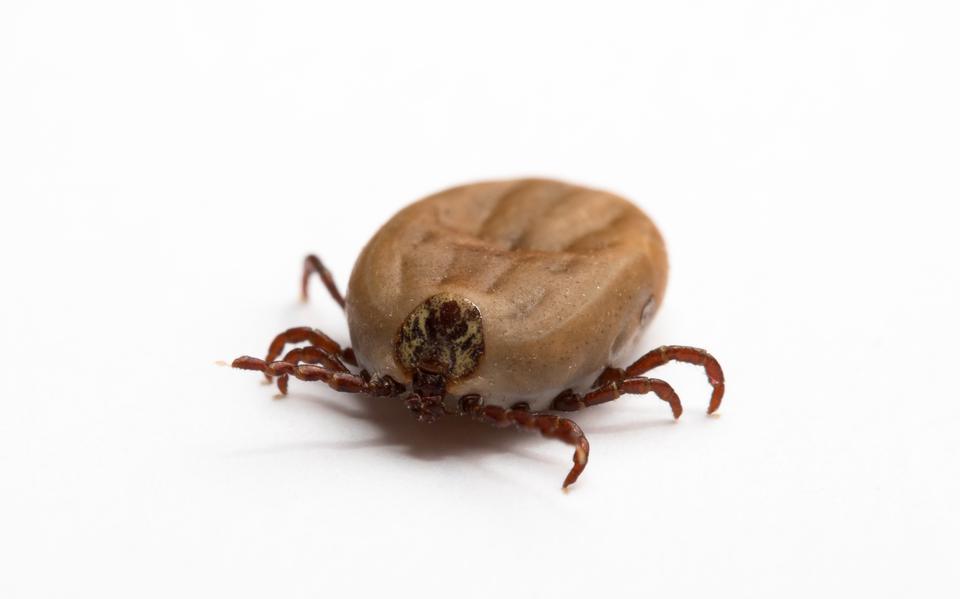In children, ticks bite the head and neck a lot and in adults mainly on the legs. This emerged from a study by RIVM and Wageningen University.
A tick bite can lead to Lyme disease. In babies, better control of the neck and under the hair can prevent them from contracting Lyme.
Where do you often find a tick bite?
A total of 32 percent of all children’s bites were on the head or neck, compared to 3 percent in adults. Bites on the legs are most common in adults: 55 percent of all bites and 25 percent in children. Bites around the pubic area are less common in children and adults: 7 percent in children and 9 percent in adults. But if they bite there, they are detected and removed later than average, so researchers say it’s important to monitor the entire body now that tick season has started again.
Tick season
“This year has already seen a slight rise in the number of tick bite reports in mid-February, during a much warmer period.” “Tick season has already started,” says RIVM researcher Kees van den Wiegengard. “For now, the number of reports is on the low side for this. Time of year. When the weather improves, we expect an increase. Were you green, then scan your entire body for tick bites’
Radar graphic
In 2020, 8,500 tick bites were made Tekenradar.nl mentioned. This is roughly the same as the average of the past seven years. In 2020, the largest number of tick bites were reported in Gelderland and Utrecht, and the lowest in Zeeland and Flevoland. Per capita, the most tick bites were reported in Drenthe, and the least in the southern Netherlands. About 30 percent of all tick bites reported in 2020 were contracted in the park.
Where do ticks happen most often?
Ticks occur mainly in wooded areas with tall weeds. The creature, which has an average size of about 1 to 3 millimeters, makes its way up the stalks of grass and waits there for a lift from a bystander. Human or animal. The gardens are also a popular place to stop ticks. About a third of garden tick bites are captured each year. Ticks are easy to miss. If the tick bites you, there appears to be a black spot on your skin. After a few days, sucking in the blood causes the tick to swell into a brown or gray ball the size of a pea.
loading
Do you get lyme from every tick bite?
Not every tick bite is an infection. Every year, according to the RIVM, more than a million people are bitten by ticks. About 2 out of every 100 people develop Lyme disease after a tick bite, about 27,000 people a year. Every year 1,000 to 2,500 people have long-standing complaints. About 1 in 5 ticks carry Lyme bacteria. The bacteria are not transmitted with every tick bite. If you have Lyme disease, you may have a spot or circle around the location of the tick bite. Other possible symptoms are fever and possibly muscle and joint pain. In the long term, you may occasionally develop other skin complaints, neurological complaints, joint complaints, or cardiac complaints.
What is Lyme disease and can it be cured?
Infected people initially experience flu symptoms such as fever, headache, and fatigue. Often a red circle appears on the skin around the site of the sting. However, this is not always the scenario. In a later stage of the disease, problems with the nervous system, joints, skin, or heart appear. The infection can lead to paralysis of parts of the body or disturbances in the heart. Research on ticks and Lyme disease is still in its infancy. If the tick has been on the skin for more than 24 hours, it is recommended to see a doctor. Antibiotics fight this condition, but sometimes they are not effective enough. The Lyme Patients Association has about 2,500 members who have persistent complaints as a result of the disease.
How do you prevent a tick bite?
Best protection for wearing clothes with long sleeves and legs. Ticks are also easy to spot on light clothing. But due to the constant high temperatures during the year, this protection is not always pleasant. So what’s always important: Check in at the end of the day. Ticks can land on any part of the body, especially under the armpits, between the groin, at the back of the knee and the buttock stitches.
loading
Tick bite, what now?
• Remove ticks as quickly as possible! The longer the tick remains in your skin, the more likely it is to transmit pathogens.
Do not use alcohol, iodine, oil, or any other substances before removing the tick.
• Hold the tick with pointed tweezers as close as possible from the skin to the head and gently pull it out. If a piece of the head remains in the skin it is harmless. It will come out on its own, just like a renegade. Then disinfect the sting site. Are you using a different tick remover? Then follow the directions for use.
• Write down when and where you were bitten. Monitor the skin around the bite for up to three months after the tick bite. Pay attention to the appearance of skin discoloration or complaints that coincide with Lyme disease.
Go to a doctor if you have one of the following complaints after a tick bite:
Discoloration of the skin at the site of the tick bite, which becomes larger. This can appear for up to three months after the tick bite.
Fever, and possibly muscle and joint pain, in the first weeks after a tick bite.
• Sometimes, joint complaints, skin complaints, neurological complaints, or cardiac complaints can occur. This can happen if early symptoms of Lyme disease are not treated with antibiotics. But these complaints are also sometimes the first manifestation of the disease

“Coffee buff. Twitter fanatic. Tv practitioner. Social media advocate. Pop culture ninja.”










More Stories
Which can cause an increase in nitrogen.
The Central State Real Estate Agency has no additional space to accommodate Ukrainians.
The oystercatcher, the “unlucky national bird,” is increasingly breeding on rooftops.